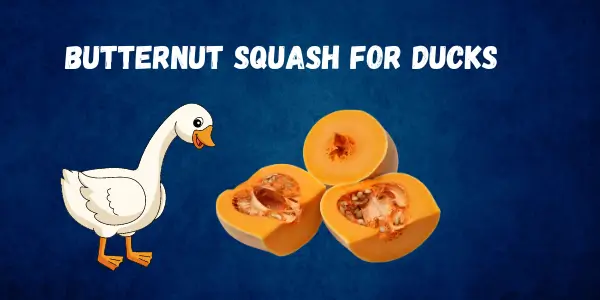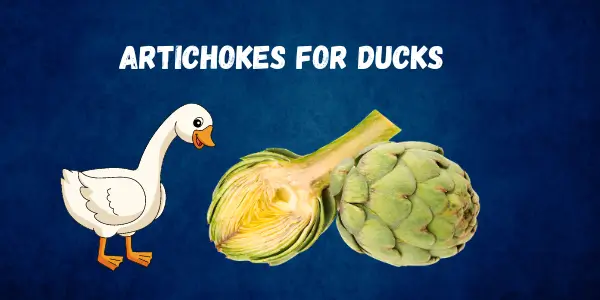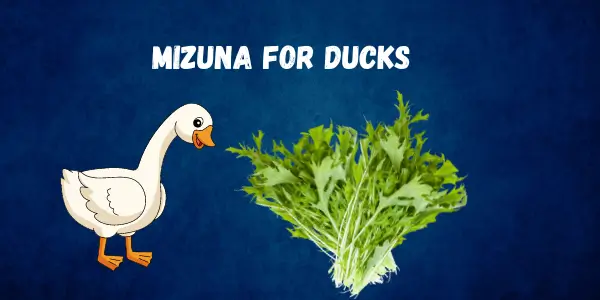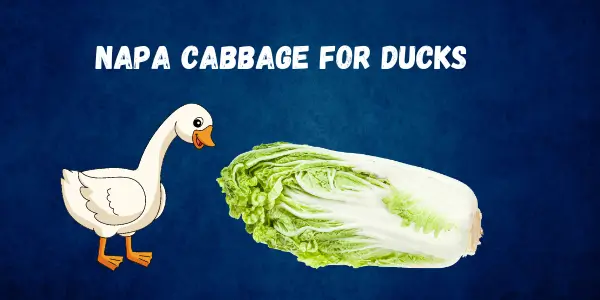Can Ducks Eat Turnips A Nutritional Facts for Your Flock Diet
Published: 25 Sep 2024
Can Ducks Eat Turnips? Uncover the dietary flexibility of our feathered friends, ducks, begins with a look at their omnivorous nature. Often seen skimming through ponds for aquatic plants, they also nibble on grass, snack on insects, and even savor the occasional small fish or amphibian.
Can Ducks Eat Turnips?
Ducks are charming and often underestimated creatures when it comes to their care and feeding. As backyard poultry and natural wildlife, their dietary needs are both fascinating and crucial for their health.
Ducks are omnivorous and have a diet that varies widely, from aquatic plants and insects to grains and greens. The question of whether they can consume turnips is particularly interesting because it combines elements of nutrition, safety, and dietary enrichment.

Knowing what ducks can eat not only ensures their health and vitality but also aids in maintaining the balance of their natural behavior.
Proper nutrition is critical in preventing diseases and promoting a long, healthy life for ducks. Furthermore, understanding their dietary needs helps in creating a more interactive and engaging environment for them, which is vital for their overall well-being.
What Are Turnips?
Turnips are root vegetables known for their versatility and nutritional benefits. They belong to the Brassica family, which also includes cabbage and broccoli. Turnips have a mild, slightly peppery flavor and are commonly used in both culinary and livestock feed applications.
Nutritional Profile of Turnips:
Turnips are typically white-skinned with a purple, red, or greenish upper part where the root has been exposed to sunlight. They are rich in vitamins C and B6, folate, calcium, and fiber.
These nutrients make turnips an excellent choice for supporting immune health, digestion, and bone strength. The root is also low in calories, making it a favorable option for weight management diets.
Different Parts of the Turnip (Root and Greens):
The root of the turnip is most commonly consumed, but the greens are equally nutritious. Turnip greens are a staple in many southern cuisines and are known for their high content of vitamins A, C, and K, as well as calcium and antioxidants.
These greens can be cooked similarly to spinach or collard greens, providing a bitter yet flavorful addition to meals.
The root and the greens offer diverse culinary uses and health benefits, highlighting the turnip’s value as a dual-purpose vegetable.
Can Duckling Eat Turnips?
Ducklings can indeed eat turnips, but it’s crucial to introduce this vegetable cautiously and in appropriate forms.
Since ducklings have more sensitive digestive systems, it’s recommended to start with very small amounts of finely grated or mashed turnips that have been thoroughly cooked to soften them.
This method ensures the turnips are easy for the ducklings to consume and digest. It’s also important to ensure the turnips are organic or well-washed to avoid pesticide exposure.
As with any new food, observe the ducklings for any signs of digestive distress or disinterest and adjust their diet accordingly.
Introducing turnips as part of a balanced diet can help young ducks get accustomed to a variety of foods from an early age.
Benefits of Turnips for Ducks:
| Benefits of Turnips for Ducks: |
|---|
|
Incorporating turnips into a duck’s diet can be highly beneficial, given their rich nutritional profile. Both the root and the greens of the turnip offer vital nutrients that contribute significantly to the health and wellness of ducks.
|
Other Vegetable Ducks Eat:
Comparisons with Other Common Duck Foods:
When considering the dietary needs of ducks, it’s beneficial to compare turnips with other commonly fed items to understand their nutritional and practical advantages.
Turnips vs. Lettuce:
- Nutrient Density: Turnips are more nutrient-dense than lettuce, offering higher levels of vitamins A and C, as well as calcium and fiber. While lettuce is a good hydration source due to its high water content, turnips provide more substantial health benefits.
- Caloric Content: Turnips have a slightly higher caloric content, which makes them a more energy-rich food compared to lettuce, beneficial for colder months.
Turnips vs. Corn:
- Fiber Content: Turnips have a higher fiber content compared to corn, which is beneficial for digestive health.
- Vitamins and Minerals: While corn is a good energy source, turnips offer a broader spectrum of vitamins and minerals, such as vitamin A and calcium, crucial for overall health and bone strength.
Turnips vs. Peas:
- Protein Content: Peas are higher in protein compared to turnips, which is essential for muscle and tissue repair.
- Vitamin K: Turnip greens provide a significant amount of vitamin K, which is not as prevalent in peas. Vitamin K is vital for blood clotting and bone health.
Potential Risks of Feeding Turnips to Ducks:
| Potential Risks of Feeding Turnips to Ducks: |
|---|
|
While turnips can be a nutritious addition to a duck’s diet, there are some potential hazards to consider before including them regularly:
|
How to Properly Prepare Turnips for Safe Consumption:
Properly preparing turnips ensures that ducks can enjoy their benefits safely without any adverse effects. Here’s a straightforward guide on how to prepare turnips for ducks:
- Choose Organic: Opt for organic turnips to avoid pesticide residues. If organic isn’t available, thoroughly wash conventional turnips under running water, scrubbing the surface to remove any chemicals.
- Peel the Roots: While ducks can technically eat the skins, peeling turnips can reduce the risk of pesticide exposure and make them easier for ducks to digest.
- Chop into Small Pieces: Cut the turnips into small, bite-sized pieces to prevent choking hazards. This size adjustment is crucial for the safety of all ducks, especially smaller or younger ones.
- Cook, If Necessary: Although ducks can eat raw turnips, cooking them can make the roots softer and easier to digest. Lightly steaming or boiling turnips until they are tender is a good approach.
- Mix with Other Foods: Introduce turnips into the duck’s diet gradually, mixed with other familiar foods to ease the adjustment and enhance dietary variety.
- Offer Turnip Greens Sparingly: Turnip greens are nutritious but should be offered in moderation to avoid issues with oxalates, which can bind minerals.
- Monitor Duck’s Reaction: Observe how ducks react to turnips initially. If there are signs of digestive upset or refusal, adjust the amount accordingly or consult with a veterinarian specializing in avian diets.
FAQs: Introducing Turnips to a Duck’s Diet:
Can ducks eat both the root and greens of turnips?
Yes, ducks can eat both the root and the greens of turnips. The roots should be chopped into small pieces, and the greens can be offered in moderation due to their high oxalate content.
How often should I feed turnips to my ducks?
Turnips should be fed as a part of a balanced diet, ideally 2-3 times a week. This ensures that ducks receive a variety of nutrients from different sources.
Do I need to cook turnips before feeding them to ducks?
Turnips can be fed both raw and cooked. Cooking them makes digestion easier, especially for younger or more sensitive ducks.
What should I do if a duck reacts negatively to turnips?
If you notice any signs of digestive distress or allergic reactions, reduce the amount of turnips or remove them from the diet and consult with a veterinarian
What is the best way to prepare turnips for ducklings?
For ducklings, it’s best to serve turnips finely grated or mashed after being cooked to ensure they are soft enough to eat safely. Start with very small quantities to see how they handle it.
Are there any specific parts of the turnip that should not be fed to ducks?
Generally, all parts of the turnip are safe for ducks. However, the greens should be given in moderation due to their higher oxalate content, which can interfere with calcium absorption.
Can turnips replace other vegetables in a duck’s diet?
While turnips are nutritious, they should not replace other vegetables entirely. Ducks benefit from a varied diet that includes a range of vegetables to meet all their nutritional needs.
How do I know if my ducks like turnips?
Observe their behavior when you introduce turnips. Ducks that like turnips will eagerly eat them and show no signs of discomfort afterward. If they ignore the turnips or seem distressed after eating them, they might not be a favorite.
Can feeding turnips to ducks help with their feather health?
Turnips contain nutrients like vitamins A and C, which can support overall health, including feather condition. However, they should be part of a broader diet that addresses all aspects of health for optimal feather quality.
Are organic turnips significantly better for ducks than non-organic?
Organic turnips are preferable because they are less likely to contain pesticide residues. If non-organic turnips are used, they should be thoroughly washed to minimize exposure to potentially harmful chemicals.
Conclusion:
Introducing turnips into a duck’s diet can offer nutritional benefits and variety, enhancing their overall health and dietary satisfaction.
Start with small, manageable pieces, whether cooked or raw, and monitor the ducks’ health and preferences.
Maintaining a watchful eye and adjusting the diet as necessary will ensure that ducks not only enjoy their meals but also thrive on a well-rounded diet.
Turnips, when introduced properly, can become a healthy part of a duck’s dietary regimen.

- Be Respectful
- Stay Relevant
- Stay Positive
- True Feedback
- Encourage Discussion
- Avoid Spamming
- No Fake News
- Don't Copy-Paste
- No Personal Attacks

- Be Respectful
- Stay Relevant
- Stay Positive
- True Feedback
- Encourage Discussion
- Avoid Spamming
- No Fake News
- Don't Copy-Paste
- No Personal Attacks





